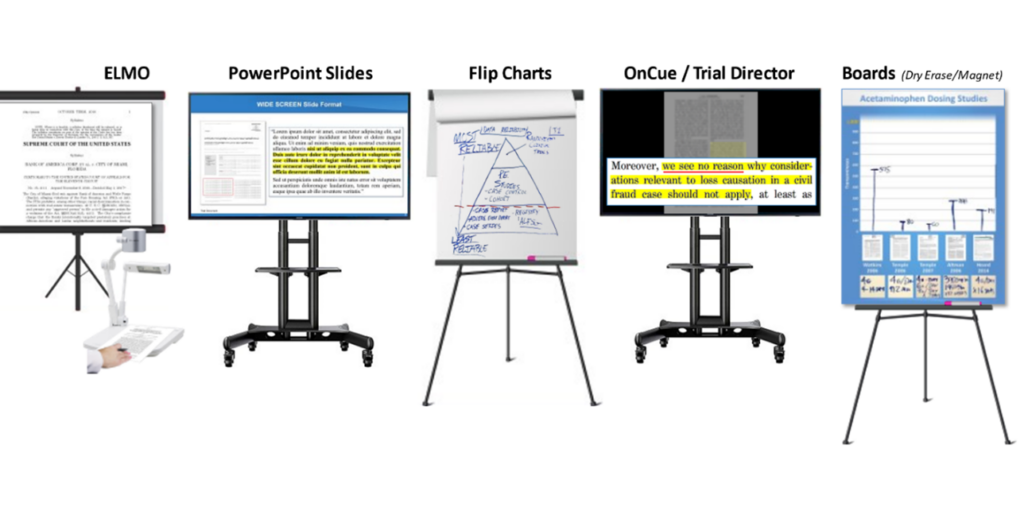Simplify legal arguments with interactive and structured trial presentations for better case presentation.
Simplify legal arguments with interactive and structured trial presentations for better case presentation.
Blog Article
How Test Presentations Enhance Your Argument and Persuade Jurors
Test presentations serve as a pivotal mechanism for boosting lawful arguments and encouraging jurors. The strategic usage of visuals not only makes clear complex information but also captures jurors' attention a lot more efficiently than words alone.

Significance of Visual Aids
Visual help play an important role in boosting the effectiveness of test presentations, as they can considerably boost target market interaction and retention of information. In the context of a test, where jurors are entrusted with processing complicated details, aesthetic aids serve to simplify and clarify bottom lines. Charts, graphs, and photos can communicate data and ideas that may otherwise bewilder or perplex jurors, enabling an extra uncomplicated understanding of the proof presented.
Moreover, aesthetic aids help in keeping juror interest throughout the process. By damaging the monotony of spoken testimony, these devices can punctuate vital arguments, making them extra remarkable. Reliable visual aids can also stimulate emotional actions, which can be critical in persuading jurors to line up with the presenter's story.

Crafting Compelling Stories
An engaging story is essential in trial discussions, as it acts as the backbone of effective persuasion. It enables lawyers to weave together realities, proof, and emotional elements into a coherent story that reverberates with jurors. This narrative structure enables jurors to comprehend the intricacies of the case while leading them with the attorney's disagreement.
To craft a compelling narrative, attorneys ought to concentrate on clarity and comprehensibility. This includes developing a clear protagonist-- frequently the customer-- and detailing their trip via the events in inquiry. Offering the realities in a logical sequence improves understanding and preserves involvement. Furthermore, using brilliant summaries can develop psychological pictures that assist jurors imagine the events, making the story a lot more remarkable.
In addition, incorporating essential motifs throughout the presentation reinforces the core message and help in retention - trial presentations. The story must not only convey details however likewise stimulate a sense of justice, highlighting the risks involved. Ultimately, a sound narrative cultivates a link between the jurors and the instance, placing the attorney's argument as both legitimate and engaging, thus raising the possibility of a desirable verdict

Engaging the Jury Mentally
Effective jury involvement rests on the lawyer's capacity to link with jurors on an emotional level. This link can substantially affect jurors' perceptions and their best decision-making. Making use of sob stories allows attorneys to humanize the case, changing abstract lawful concepts right into relatable experiences. By offering real-life tales or endorsements, lawyers can check out this site stimulate compassion and compassion, cultivating a much deeper understanding of the concerns at risk.
Aesthetic aids, such as photos or videos, can further improve psychological interaction, providing jurors with dazzling depictions of the situation's human elements. Crafting a narrative that highlights the struggles and triumphs of the people entailed ensures that jurors see beyond the legal disagreements and acknowledge the human consequences of their decisions.
Additionally, tone and body language play a crucial role in communicating emotion. A lawyer's enthusiastic delivery can reverberate with jurors, strengthening their emotional investment in the case. It's important to balance sob stories with accurate evidence, making sure that jurors feel compelled to act while continuing to be grounded in the reality. Eventually, a mentally engaged jury is more probable to be encouraged, making psychological link a vital element of efficient test presentations.
Structuring Your Discussion

The body of the discussion need to be practically segmented into bottom lines, each sustained by engaging evidence. It is useful to use narration strategies to weave realities into a narrative that jurors can conveniently comply with. Aesthetic help, such as graphes and video clips, can enhance comprehension and involvement, assisting to highlight essential items of proof.
Real-World Study
Taking a look at real-world instance research studies provides important understandings into the art of test discussions and persuasion. As an example, the spots case of go now "O.J. Simpson v. Individuals of California" illustrates just how aesthetic aids and engaging stories can sway court understandings. The protection group successfully used an approach that integrated high-profile professional testimonies with multimedia discussions, which captivated jurors and eventually influenced their choice.
Another notable example is the "McDonald's Coffee Case," where the plaintiff's attorneys used graphic pictures of the injuries received by Stella Liebeck. trial presentations. additional resources This raw aesthetic proof played a critical duty in sharing the extent of her burns, bring about a substantial jury honor. Such instances demonstrate that impactful trial presentations commonly rest on the effective integration of visuals and storytelling to stimulate emotional reactions from jurors
Additionally, the "Casey Anthony Test" highlighted the relevance of narrative comprehensibility and integrity. The prosecution's failure to establish a compelling timeline decreased their persuasive power, emphasizing the requirement of a well-structured discussion. Assessing these situations exposes that successful test presentations call for critical preparation, emotional involvement, and the capacity to reverberate with jurors' values and beliefs.
Final Thought
Test discussions significantly enhance debates and convince jurors through the strategic usage of visual help, engaging stories, and psychological involvement. A well-structured discussion balances psychological charms with accurate evidence, ultimately resonating with jurors' values.
Report this page